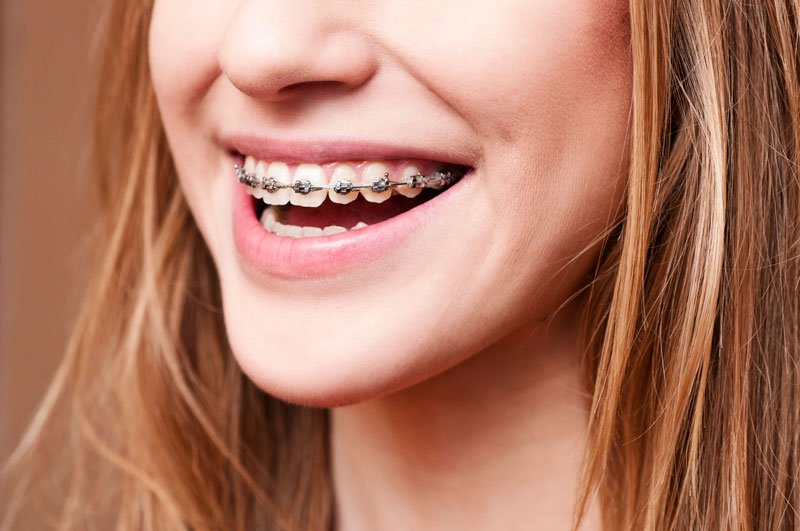Comprehensive Guide to Orthodontics Treatments for Dealing With Oral Misalignments
In the realm of orthodontics, the journey to attaining a flawlessly lined up smile includes a myriad of procedures customized to remedy oral misalignments. From traditional braces to invisible aligners and even surgical options, the field of orthodontics supplies an array of options to deal with varying degrees of oral abnormalities. Comprehending the complexities of each procedure, including their mechanisms, advantages, and prospective disadvantages, is important in making notified decisions concerning one's orthodontic therapy. As we browse via the detailed guide to orthodontic procedures for fixing oral misalignments, the intricate information of each technique will certainly unfold, clarifying the course toward a unified and practical oral alignment.
Orthodontic Procedures Review

Along with typical dental braces and clear aligners, orthodontists might additionally suggest other treatments like headgear, palatal expanders, or retainers to attend to details alignment problems (invisalign). These treatments are tailored to each person's one-of-a-kind needs and may involve a combination of therapies to attain the wanted results. Regular changes and surveillance are critical components of orthodontic therapy to make sure development is on track and to make any kind of essential alterations along the road. By going through orthodontic procedures, people can not just accomplish a straighter smile but additionally enhance their general oral wellness and function.
Traditional Dental Braces: Exactly How They Work
When thinking about orthodontic therapies for oral imbalances, standard dental braces stand out as a time-tested technique for fixing teeth placing. Typical braces are composed of braces, wires, and bands that function with each other to use constant stress on the teeth, slowly relocating them into the wanted placement.
As stress is used to the teeth with the braces, the bone bordering the teeth is reshaped to support the new tooth settings. Clients will need normal changes at the orthodontist's workplace to make sure the dental braces continue to apply the appropriate pressure for effective teeth movement.
Unnoticeable Aligners: Cons and pros
Unseen aligners supply a practical and discreet alternative to standard braces for correcting dental misalignments. These clear, customized trays are virtually unseen when put on, making them an attractive option for people looking for a much more visually pleasing orthodontic therapy. Among the main advantages of invisible aligners is their removability, enabling simpler upkeep of oral hygiene contrasted to standard braces. Individuals can remove the aligners before consuming or brushing their teeth, lowering the danger of food obtaining stuck in the device and simplifying the cleaning process.

Surgical Orthodontic Options
Surgical interventions in orthodontics existing practical options for resolving complex oral misalignments that might not be efficiently resolved via conventional orthodontic therapies. While conventional dental braces and unnoticeable aligners can fix several orthodontic problems, particular situations require medical intervention to attain ideal outcomes. Surgical orthodontic options are generally advised for severe malocclusions, substantial jaw inconsistencies, and instances where the underlying bone framework requires alteration to accomplish proper alignment.
One usual surgical orthodontic procedure is orthognathic surgical treatment, which entails repositioning the jaws to deal with functional problems such as problem eating or speaking. This surgical treatment is often carried out in partnership with an orthodontist that helps align the teeth before and after the treatment. Surgical orthodontics might additionally involve procedures to expose affected teeth, eliminate excess periodontal tissue, or reshape the jawbone to create a much more harmonious facial profile.
Before taking into consideration medical orthodontic alternatives, patients undergo a detailed examination to establish the need and possible benefits of such treatments. cumming invisalign. While surgical procedure might appear overwhelming, it can substantially improve both the function and appearances of the smile in instances where standard orthodontic therapies drop short
Retainers and Post-Treatment Treatment

Failure to conform with post-treatment treatment instructions can result in relapse, where the teeth progressively move back in the direction of their original placements. Constant retainer wear, excellent oral health, and regular dental exams are vital for maintaining the results attained through orthodontic surgical procedure and guaranteeing the lasting security of the fixed oral alignment.
Verdict
Finally, orthodontic treatments supply various alternatives for fixing oral misalignments. Standard dental braces use metal braces and wires to change teeth into appropriate alignment. Unnoticeable aligners give a more discreet choice but might not appropriate for all situations. Surgical orthodontic options are offered for more serious imbalances. Retainers are typically utilized post-treatment to keep the new alignment. Generally, orthodontic treatments can efficiently improve oral health and visual appearance.
As we browse via the comprehensive guide to orthodontic treatments for dealing with dental misalignments, the detailed information of each approach will certainly unfold, dropping light on the course towards a harmonious and functional oral positioning. - orthodontist
One of the most common orthodontic therapies Home Page is the use of braces, which consist of steel brackets and cables that use mild pressure to gradually change teeth right into the preferred position.When thinking about orthodontic treatments for dental imbalances, conventional braces stand out as a time-tested technique for fixing teeth positioning. In addition, unnoticeable aligners might not be ideal for complex orthodontic concerns that need more significant teeth activity, as they are normally suggested for light to modest instances. Retainers are personalized orthodontic tools made to hold teeth in their corrected positions after the completion of orthodontic therapy.